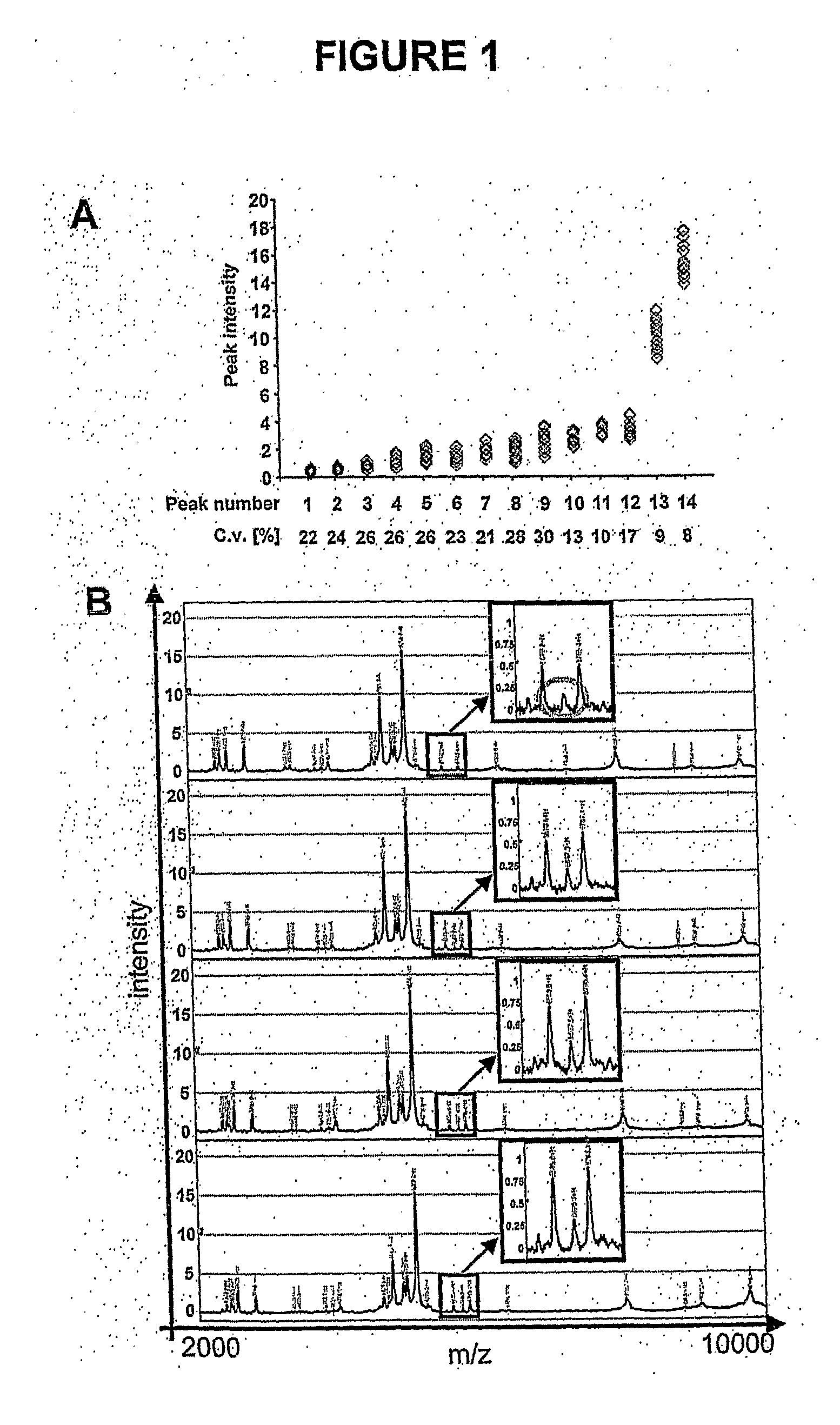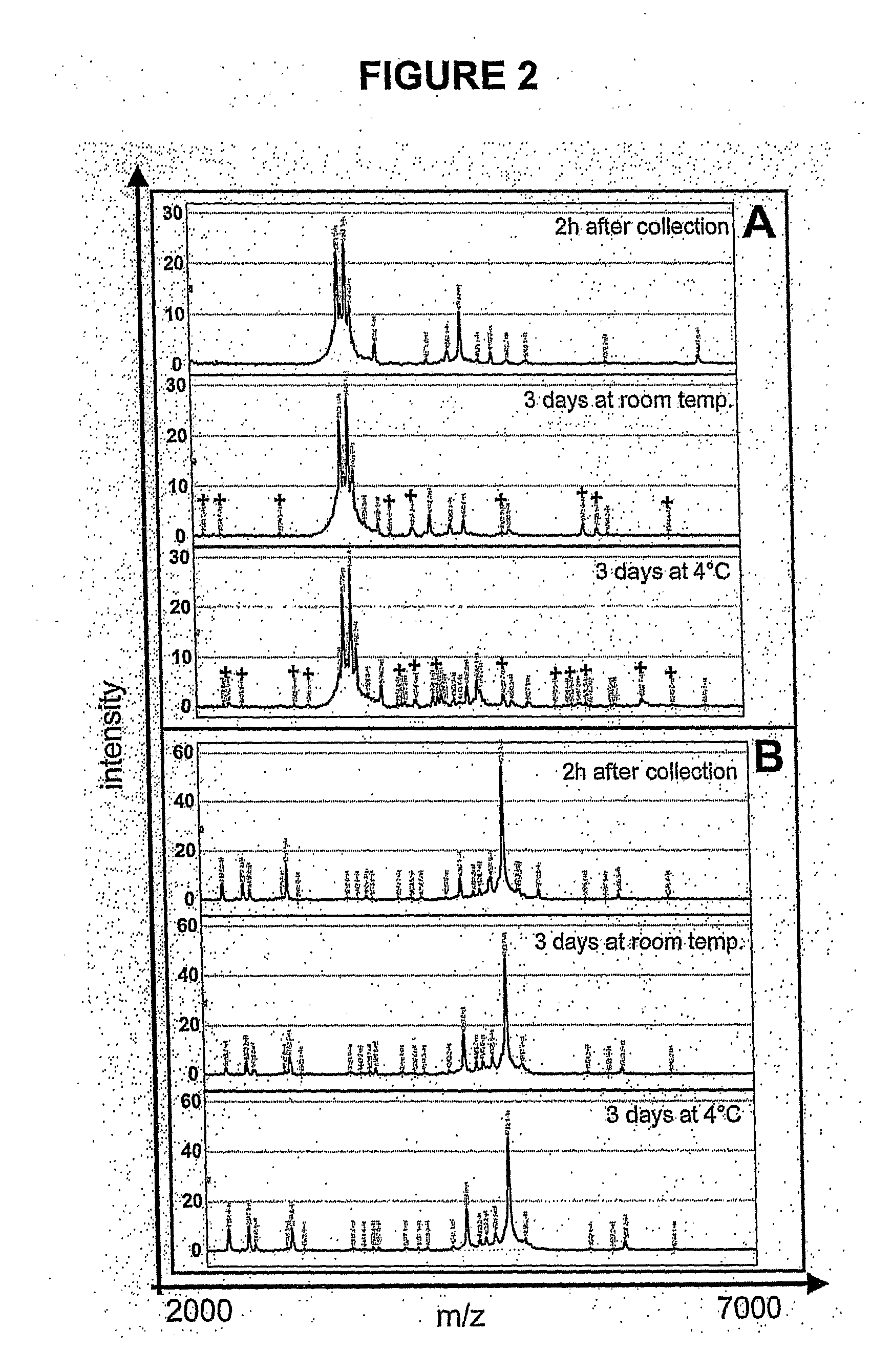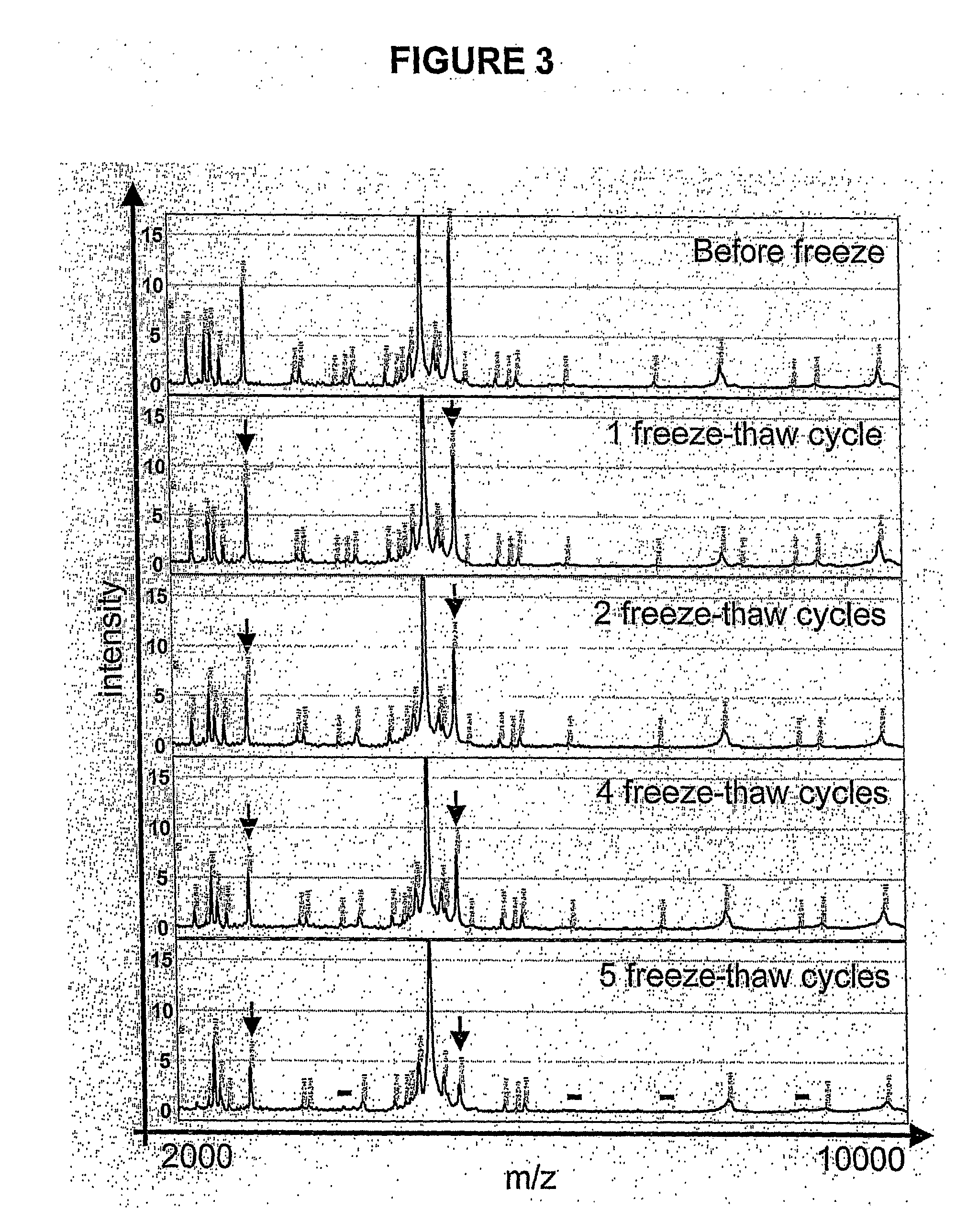Method of Detecting Kidney Dysfunction
- Summary
- Abstract
- Description
- Claims
- Application Information
AI Technical Summary
Benefits of technology
Problems solved by technology
Method used
Image
Examples
example 1
Methods and Materials
Transplanted Patients
[0146]All patient data (e.g. allograft function measured by serum creatinine, biopsies) and urine data were stored and managed in a central access database. From July 1997 to March 2003, 2400 serial mid-stream urine samples from 212 renal transplant patients were collected. These 212 patients underwent a total of 693 protocol or clinically indicated core needle allograft biopsies. All patient charts were reviewed and additional information extracted as needed. Biopsies were analysed by experienced renal pathologists, and scored according to the Banff 1997 classification (Table 3) (23). The acute Banff score determines acute interstitial (ai 0-3), tubular (at 0-3), vascular (av 0-3) and glomerular (ag 0-3) changes, whereas the chronic Banff score assesses chronic interstitial (ci 0-3), tubular (ct 0-3), vascular (cv 0-3) and glomerular (cg 0-3) changes. The individual scores are added to a total acute (a 0-12) and total...
example 2
[0161]Healthy people secrete less than 150 mg of protein in urine each day. Depending on the kidney or urinary tract system disease, proteinuria can reach more than 10 g per day. Basically, there are four different pathophysiological pathways that influence the protein content and composition of urine.
[0162][I] Filtration from serum: The major part of urine proteins is derived from serum by filtration through the glomerular barrier. The glomerular barrier consists of the fenestrated endothelial cells, the glomerular basement membrane and the slit-diaphragm of the podocytes. The latter is considered to be predominantly responsible for the characteristics of the barrier. Proteins are thought to be retained from filtration into the urine based on their molecular weight, size, shape and net charge (75). Normally, proteins below 20 kDa are completely filtrated into urine, whereas larger proteins are generally retained in the serum. Albumin (66 kDa), for instance, w...
example 3
Impact of Extrinsic Factors on Reproducibility and Peak Detection of Urine Protein Profiles
[0174]The most important extrinsic factors that influence reproducibility and peak detection are the matrix composition and the instrument settings. Matrix allows for efficient ionization and vaporization of proteins (82). The most popular matrices for the SELDI-TOF-MS system are SPA and CHCA. Saturated SPA is preferable for looking at masses above 10-20 kDa, while 10-20% CHCA provides the best resolution for proteins / peptides up to about 5 kDa. For urine protein profiling from 2-25 kDa, more peaks and a higher degree of resolution were observed with 35% CHCA. Instrument settings such as detector sensitivity, detector voltage, and laser intensity have to be determined individually. The higher the detector sensitivity and voltage or the laser intensity, the better the detection of high mass proteins. This is accompanied by an increase in background noise, which limits detection of low intensity...
PUM
 Login to View More
Login to View More Abstract
Description
Claims
Application Information
 Login to View More
Login to View More - R&D
- Intellectual Property
- Life Sciences
- Materials
- Tech Scout
- Unparalleled Data Quality
- Higher Quality Content
- 60% Fewer Hallucinations
Browse by: Latest US Patents, China's latest patents, Technical Efficacy Thesaurus, Application Domain, Technology Topic, Popular Technical Reports.
© 2025 PatSnap. All rights reserved.Legal|Privacy policy|Modern Slavery Act Transparency Statement|Sitemap|About US| Contact US: help@patsnap.com



